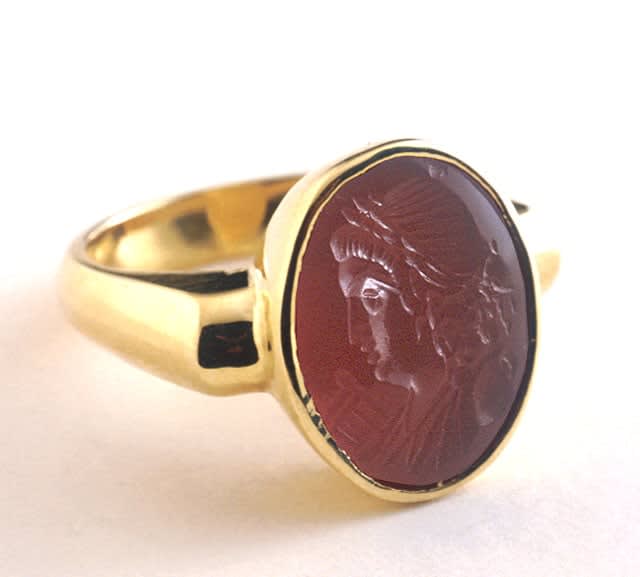Roman Intaglio of a Bust of the Goddess Artemis, 100 CE - 300 CE
Carnelian, Gold
FJ.6472
The art of glyptics, or carving on colored precious stones, is probably one of the oldest known to humanity. Intaglios, gems with an incised design, were made as early as...
The art of glyptics, or carving on colored precious stones, is probably one of the oldest known to humanity. Intaglios, gems with an incised design, were made as early as the fourth and third millennia BC in Mesopotamia and Aegean Islands. They display a virtuosity of execution that suggests an old and stable tradition rooted in the earliest centuries. The tools required for carving gems were simple: a wheel with a belt-drive and a set of drills. Abrasives were necessary since the minerals used were too hard for a metal edge. A special difficulty of engraving intaglios, aside from their miniature size, was that the master had to work with a mirror image in mind. Most frequently identified as goddess of the hunt, Artemis was particularly concerned with periods of transition, i.e, the rites of passage of virgins becoming women, or young boys becoming men through hunting or war. Though eternally virginal herself, she presided over childbirth and the rearing of children. Her own transformation occurred at the famous temple of Ephesos where she became an 'earth mother' with multiple breasts. Her more Greek interpreted role as huntress is the persona depicted on this lovely intaglio. In certain lights she is strong and forceful, while also being compassion and tender. Her famous quiver and arrows peek above her right shoulder. Possessing female and male qualities, Artemis is the perfect symbol for a modern age which esteems both sexes.
